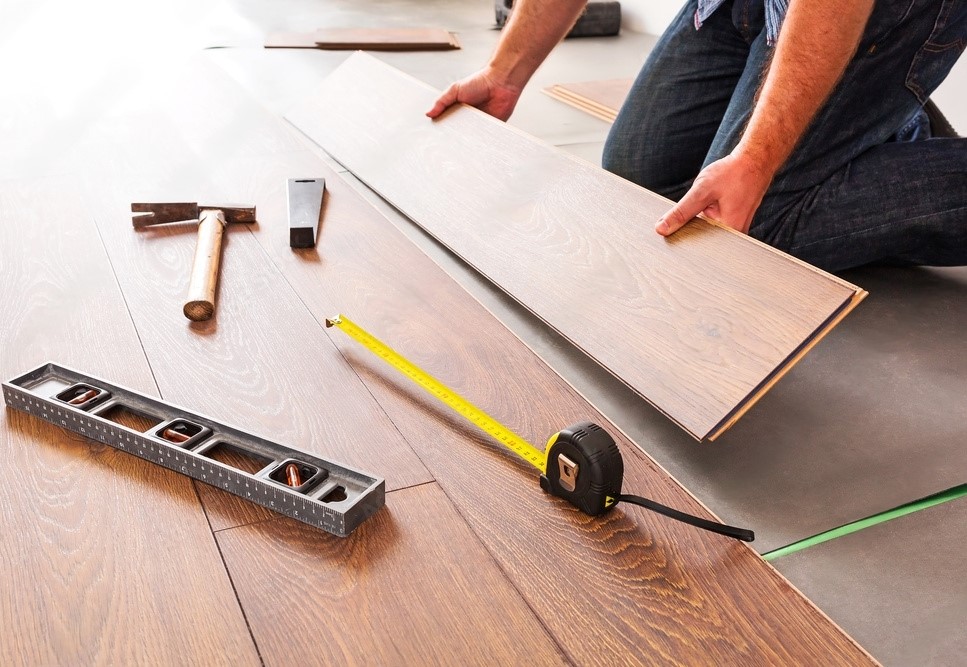
Floor repairing services
Floor repairs are the process of fixing any damage or issues in the flooring of a building, such as a home or a commercial property. The flooring can be made of various materials such as hardwood, tile, laminate, carpet, or concrete. Common reasons for floor repairs include wear and tear, water damage, structural damage, or simply the need for an update or renovation, and here is the need for floor repair services that comes to mind, and floor repair contractors help you to solve your queries.
Causes for Floor Damage:
There are many possible causes for floor damage, which can vary depending on the type of flooring material and the specific conditions in the building. Here are some common causes of floor damage:
Wear and tear:
Over time, any flooring material can experience wear and tear from regular use, such as foot traffic, furniture movement, or pet claws.
Water damage:
Water can damage flooring materials and cause warping, discoloration, or rot. Water damage can result from leaks, flooding, or humidity.
Impact damage:
Heavy objects dropped onto the floor or furniture legs can cause dents, scratches, or cracks.
Structural issues:
A sagging or settling foundation can cause cracks or shifts in the flooring above.
Poor installation:
If the flooring is not installed properly, it can lead to uneven surfaces, gaps, or damage.
Chemical damage:
Certain chemicals or spills can damage certain types of flooring material, such as acidic liquids on marble or harsh cleaning chemicals on the hardwood.
Environmental factors:
Extreme temperatures or humidity levels can cause floors to warp or expand.
Types of Floor Repairs:
Your part of the house, like rooms, and kitchens need repairing some time, including garage floor repair. There, are various types of floor repairs that can be necessary depending on the type of flooring material and the extent of the damage. Here are some common types of floor repairs:
Patching:
Patching is a type of repair that involves filling in holes or gaps in the flooring material. This can be done with a filler material, such as wood filler or concrete patching compound.
Refinishing:
Refinishing is the process of sanding down the top layer of the flooring material and applying a new finish, such as a stain or sealer. This can help restore the appearance of every type of flooring including marble floor restoration and protect it from future damage.
Replacing damaged planks or tiles:
If a specific section of the flooring is damaged, it may be necessary to replace individual planks or tiles. This can be a more complex repair that requires matching the new material to the existing flooring.
Leveling:
If the flooring has become uneven or has dips or ridges, it may need to be leveled. This can be done by adding or removing material, such as by using a self-leveling compound or shims.
Subfloor repair:
Sometimes, the subfloor underneath the flooring material can become damaged and require repair. This may involve reinforcing the subfloor with additional supports or replacing sections of the subfloor.
Resealing:
Certain types of flooring, such as concrete or tile, may require regular resealing to protect against water damage or stains.
Cleaning and maintenance:
Regular cleaning and maintenance can also be considered a type of floor repair, as it helps prevent damage and prolong the lifespan of the flooring material.
When to do floor repair:
It’s important to address any issues with your flooring as soon as possible to prevent further damage and potential safety hazards. Here are some signs that it may be time to do floor repairs:
Visible damage:
If you notice any cracks, dents, scratches, or other visible damage in your flooring material, it may be time to consider repairs.
Water damage:
If your flooring has been exposed to water, either from a leak or flooding, it’s important to address any damage quickly to prevent mold growth or other long-term issues.
Uneven surfaces:
If your flooring has become uneven, it can create a tripping hazard and may indicate a need for leveling or patching.
Squeaking or creaking:
If you notice that your flooring is making unusual noises when you walk on it, it may be a sign of underlying structural issues that need to be addressed.
Fading or discoloration:
If your flooring material has become discolored or faded, it may be time to consider refinishing or replacing it.
Age of flooring:
If your flooring is old and has not been updated or maintained, it may be time to consider repairs or replacement to prevent further damage and prolong its lifespan.
Pros of hiring Professional Floor Repair Services:
Here are some advantages of hiring a professional flooring contractor:
Pros:
Expertise:
A professional flooring contractor will have the expertise and specialized tools needed to complete the repairs quickly and effectively.
Efficiency:
Professionals can complete the repairs more efficiently, freeing up your time and ensuring the job is done correctly.
Warranties:
Many professional flooring contractors offer warranties on their work, giving you peace of mind that the repairs will last.
